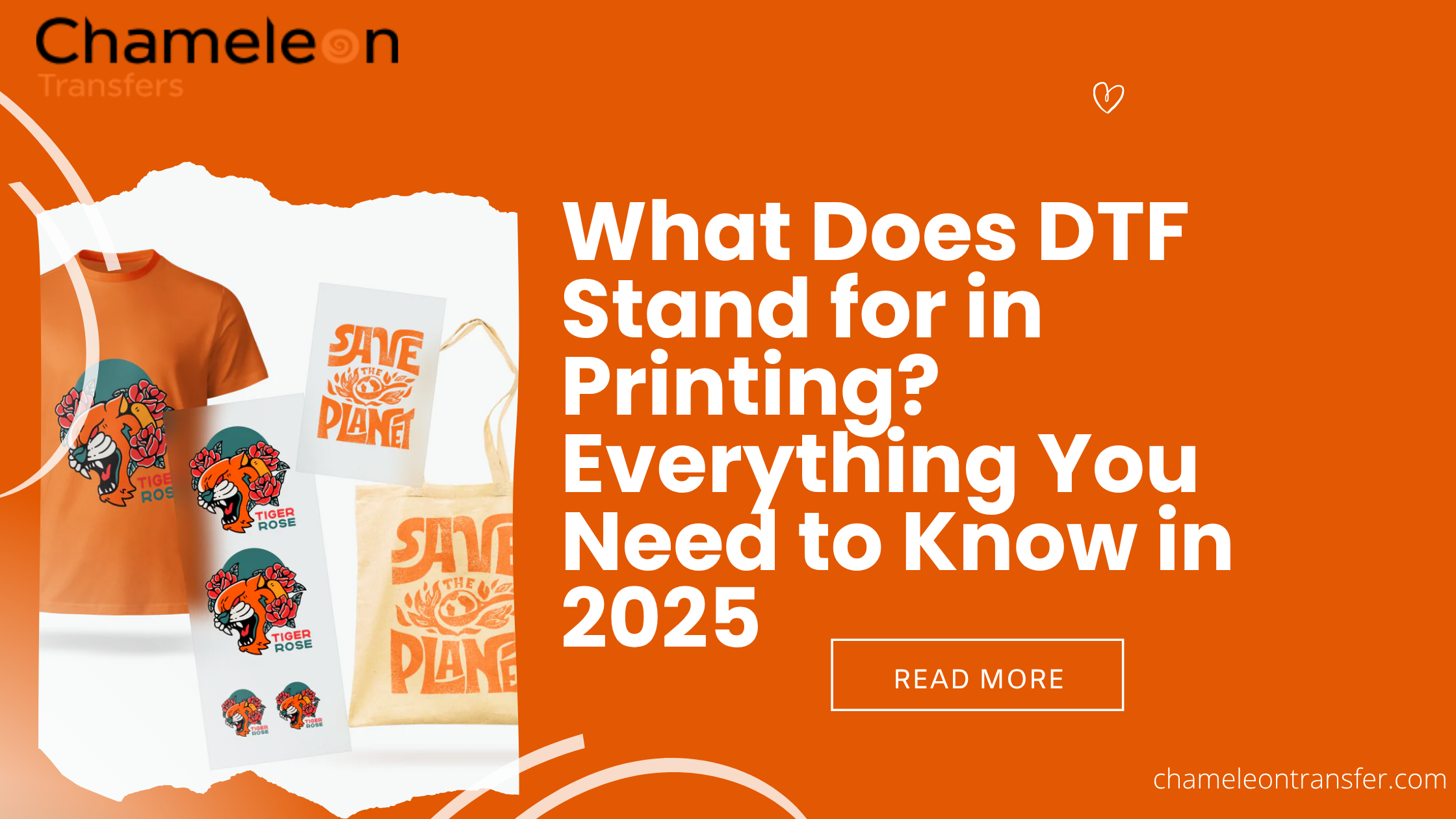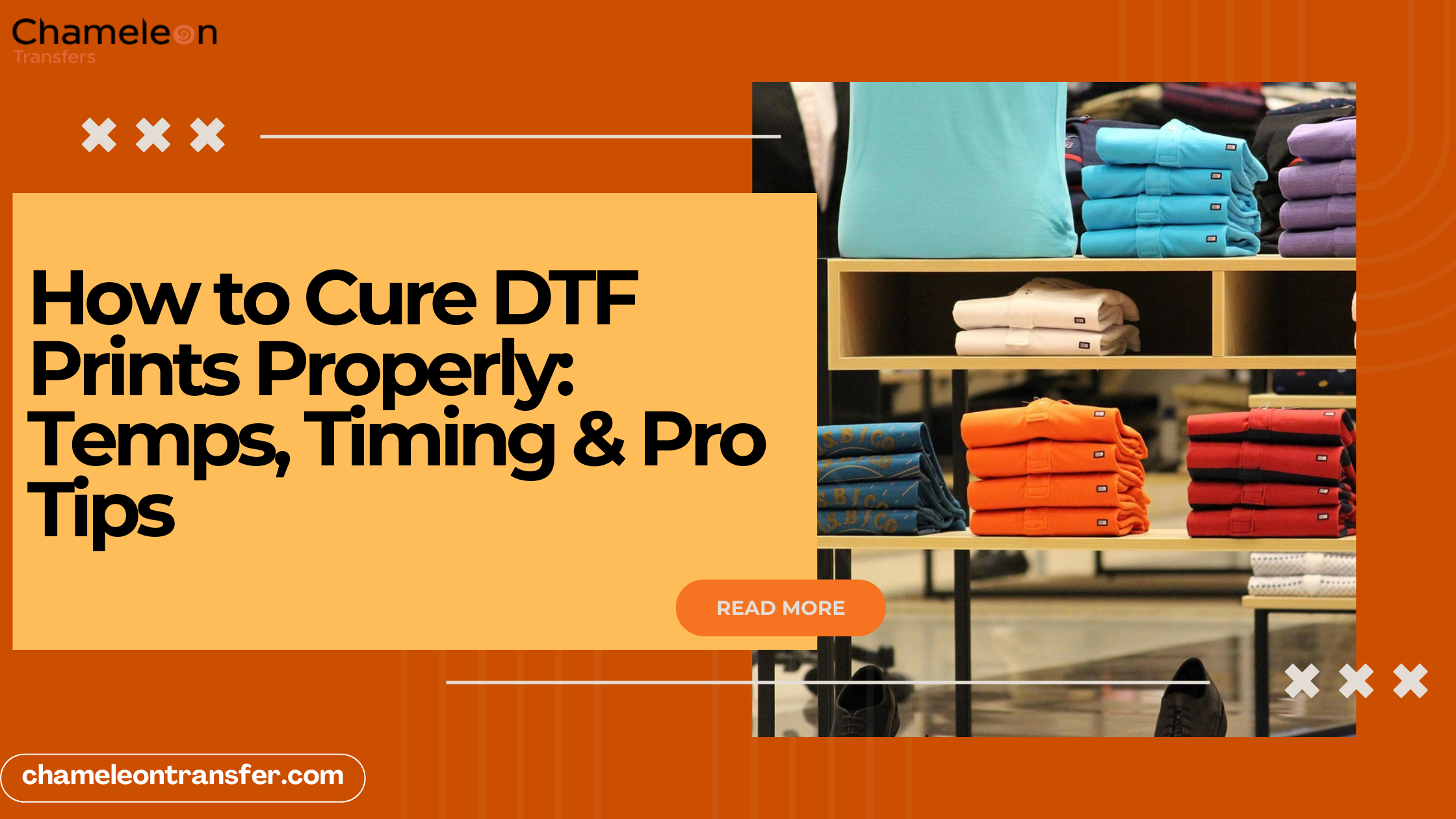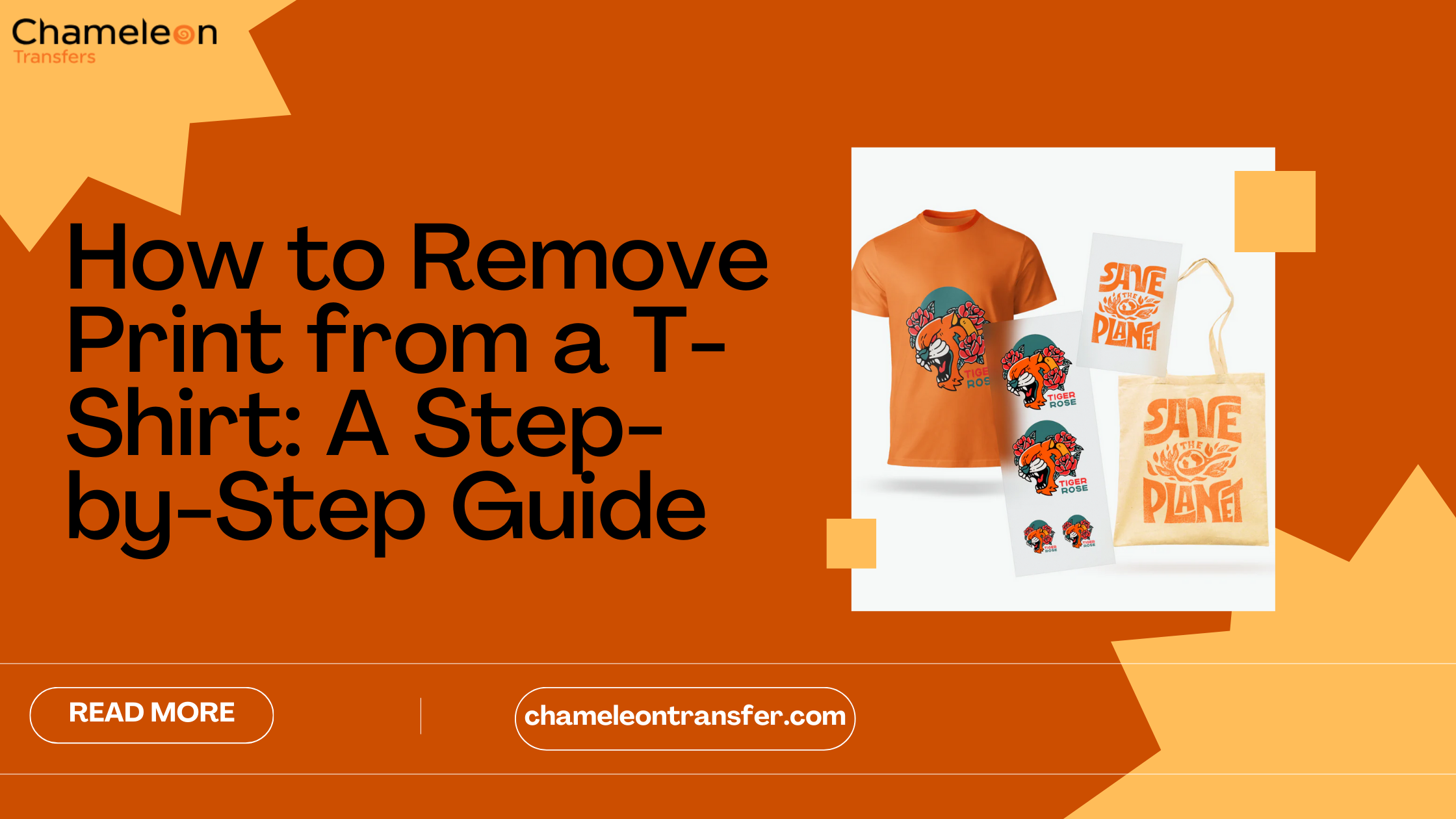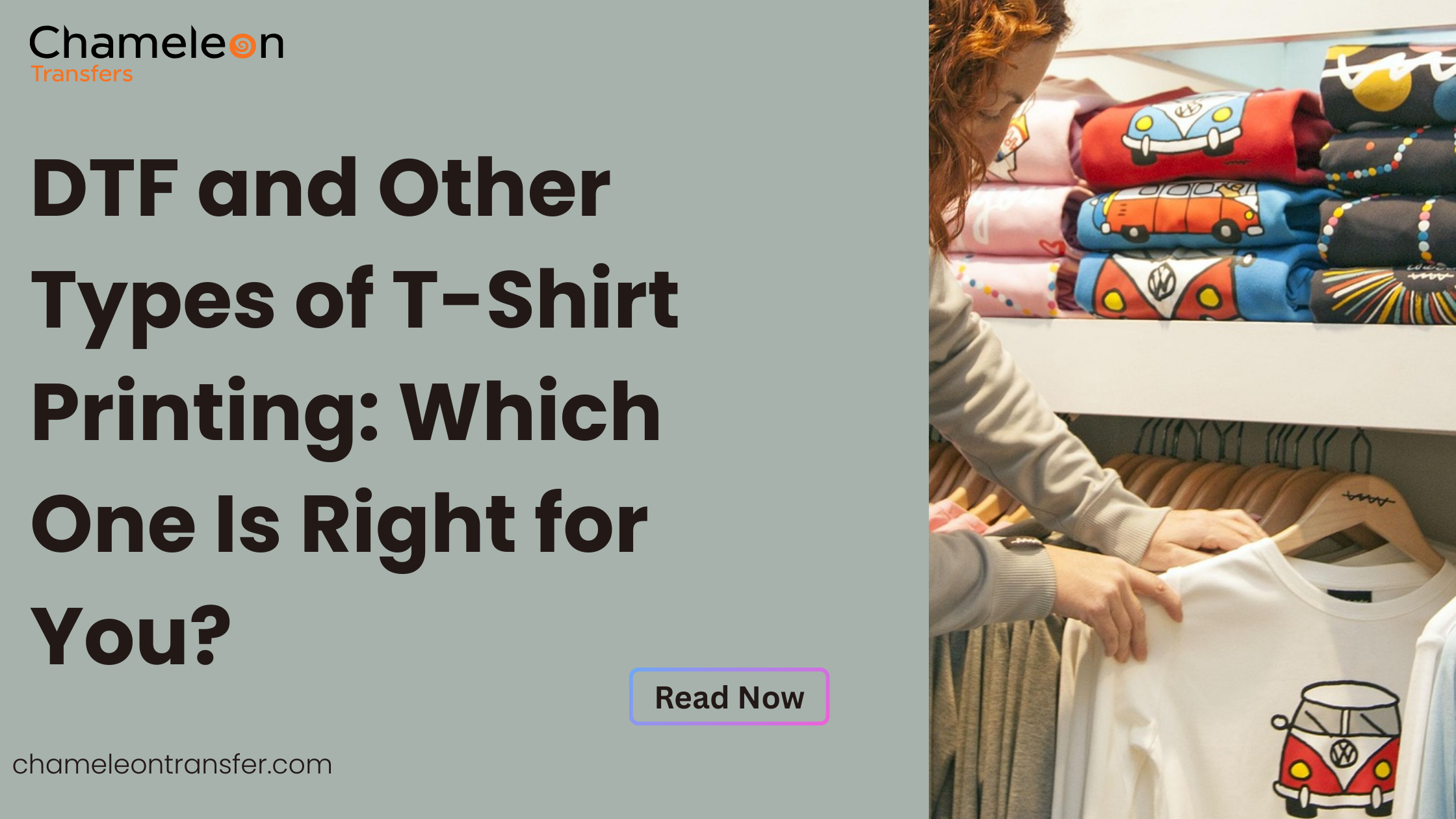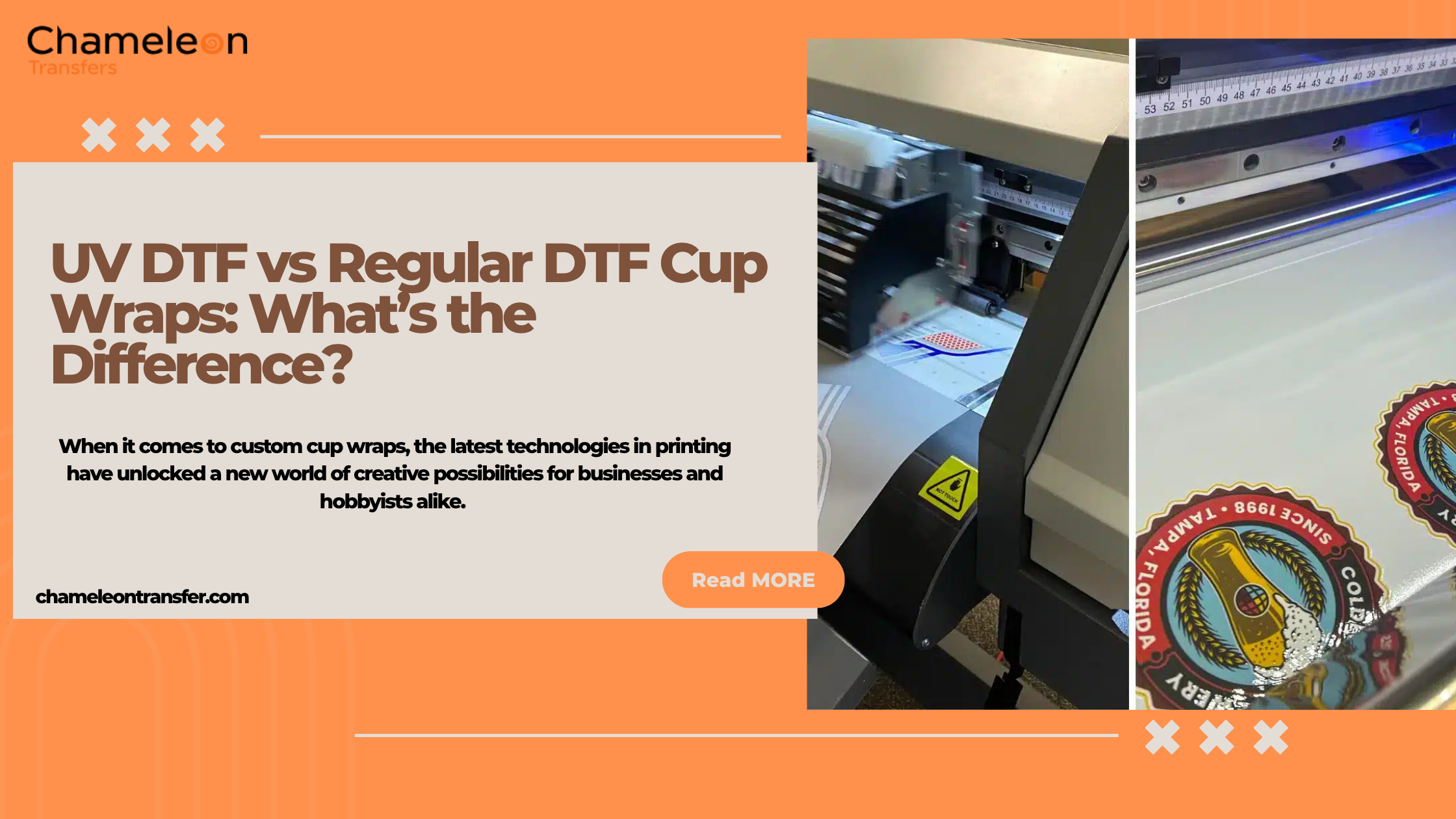When it comes to DTF transfer paper, not everything is equal. The correct paper can be the difference between a bright, enduring print and a print that becomes too faded too quickly. With so many to choose from on the market, it's easy to get caught up in the details.
Direct-to-film printing creates a bright, effective means to print images on several types of fabrics. With so many options for DTF transfer films to choose from, though, you might feel swamped trying to pick the right one that yields a durable finish.
That's why this guide on DTF transfer paper simplifies the most important factors to note, helping you select the appropriate one for you.
What is DTF Transfer Paper and Why Does It Matter?
DTF transfer paper is among the crucial components of DTF technology, allowing for printed designs on a variety of materials. The special coating provides top-notch ink adhesion and long-lasting prints, which is necessary for DTF transfer paper for fabric printing.
DTF transfer film sheets provide better fabric compatibility for amazing results on cotton, polyester, and blends. The best DTF film is also heat-resistant DTF paper and can be used at high temperatures without causing any damage to print quality.
Choosing the right DTF film will allow for an easy peel, durable designs on fabric, and a finished and professional look.
Benefits of High-Quality DTF Transfer Film
-
The best DTF transfer paper for printing ensures vivid, long-lasting prints. It resists fading and cracking even after multiple washes.
-
Waterproof DTF transfer paper improves durability for professional results. It prevents ink from smudging or washing out.
-
The best DTF film provides strong adhesion for all fabric types. It minimizes peeling, even on stretchy materials.
-
The best DTF transfer film helps produce vibrant and sharp prints. It delivers rich colors with excellent detail.
-
Film transfer paper improves DTF printing efficiency and consistency. It reduces material waste and boosts return on investment.
- Best DTF paper helps enhance color vibrancy for superior prints. It ensures a smooth application with minimal cracking or peeling.
Applications Beyond T-Shirts Using DTF Transfer Paper

The versatility of DTF transfer paper extends beyond apparel. Create vibrant designs on tote bags, phone cases, or mugs. The best DTF transfers allow for intricate details on various materials, from delicate silk to durable cotton blends.
Consider the material's texture and color; opaque film is crucial for dark garments. Heat-resistant DTF paper is essential for items subject to frequent washing. DTF printing opens up a world of creative possibilities.
Key Factors to Consider When Choosing DTF Transfer Paper
Selecting the right DTF Transfer Paper is essential to produce vibrant and long-lasting prints. Here are the key factors to ensure you get the best DTF transfers for high-quality results.
-
Ink-Absorption Capacity
Poor ink absorption can cause white and colored ink to mix or spread unevenly. High-quality DTF transfer sheets with an advanced coating ensure proper ink compatibility and sharp DTF printing results. -
Coating Layer
A smooth, impurity-free coating is crucial for enhancing color vibrancy and maintaining high quality. Uneven coating affects fabric compatibility and can lead to dull prints. -
Powder Shaking Effect
The best DTF paper for dark and light fabrics should have a clean powder-shaking effect. Residual powder around the edges can lead to dirty transfers, so testing samples before purchase is recommended. -
Release Effect
A good waterproof DTF transfer paper should peel easily after using a heat press. Difficult peeling can damage the design, reducing its quality and durability. -
Storage Capacity
Over time, low-quality types of DTF film may release oil or moisture, affecting printing industry standards. The best DTF transfers remain clean and effective even after long-term storage.
By considering these factors, you can choose DTF Transfer Paper that ensures professional-quality prints with excellent fabric compatibility and durability.
Also Read: DTF printing trying different Hot peel film vs cold peel
Comparing Hot Peel vs. Cold Peel: Which Is Better?
When choosing DTF transfer paper, understanding the difference between hot peel and cold peel is essential for achieving the best print quality.
-
Hot Peel: This type of DTF heat transfer paper allows you to remove the DTF transfer film immediately after pressing. It speeds up production but may slightly affect printed designs if not handled correctly.
-
Cold Peel: With cold peel, you must wait for the film transfer paper to cool before peeling. This method enhances print quality, providing sharper printed designs with better adhesion.
Both types of DTF Transfer Paper have their advantages. If speed matters, go for hot peel; for maximum detail and durability, cold peel is the better option.
Tips to Maximize the Performance of Your DTF Transfer Paper

To achieve the best results with your DTF Transfer Paper, follow these essential tips for vibrant, durable prints:
-
Selecting DTF transfer with the right thickness and coating ensures sharp, vibrant prints. The best DTF transfer paper enhances adhesion and durability.
-
Your choice of DTF transfer should match your printer and ink type for optimal performance. Compatibility prevents smudging and ink bleeding.
-
The best DTF paper works best with a properly heated press. Maintain consistent temperature and pressure for smooth, professional transfers.
-
Use the best transfer paper for long-lasting DTF print to ensure prints resist fading and cracking, even after multiple washes.
Conclusion
Choosing the best DTF transfer paper involves considering fabric type, design complexity, printer capabilities, and budget. High-quality DTF transfer sheets deliver superior print quality, reduce waste, and increase client satisfaction.
At Chameleon Transfers, we transform your creativity into vibrant, wearable art and stunning wall decor with our high-quality printing services. Whether you need custom apparel, unique home decor, or innovative designs, we’ve got you covered!
Let’s create something amazing together! Visit us today and start your custom printing journey with us!
FAQs
1. How to choose a DTF film?
Select a high-quality DTF transfer sheet with strong adhesion, fabric compatibility, and durability. The best DTF film ensures vibrant colors and long-lasting printed designs.
2. What are the different types of DTF paper?
There are hot peel and cold peel DTF transfer paper for fabric printing. Heat-resistant DTF paper provides better adhesion, while best DTF transfer film ensures superior color vibrancy.
3. Which DTF is best for beginners?
The best DTF paper for beginners is waterproof DTF transfer paper with special coating. It offers easy peeling, sharp prints, and smooth application, perfect for learning DTF printing.
4. What paper do you need for DTF?
You need film transfer paper with a special coating to hold ink properly. Best DTF transfer paper for printing ensures better adhesion and enhances durability for professional results.
5. Can you use dtf transfer paper in a regular printer?
No, DTF transfer film sheets require a dedicated DTF printer. Regular printers lack the ink and heat settings needed to properly transfer printed designs onto fabric.
6. How to use dtf transfer paper?
Print on DTF transfer paper, apply powder, and heat-press onto fabric. Best DTF transfer film ensures high-quality results, while heat-resistant DTF paper prevents peeling or fading.
7. What is dtf transfer paper?
DTF transfer paper is a film transfer paper with a special coating that holds ink for DTF printing. It ensures high-quality, fabric compatibility, and long-lasting printed designs.
Also, read more related blogs here. DTF Film Damaged Roll How to Fix
DTF Film Damaged Roll How to Fix


